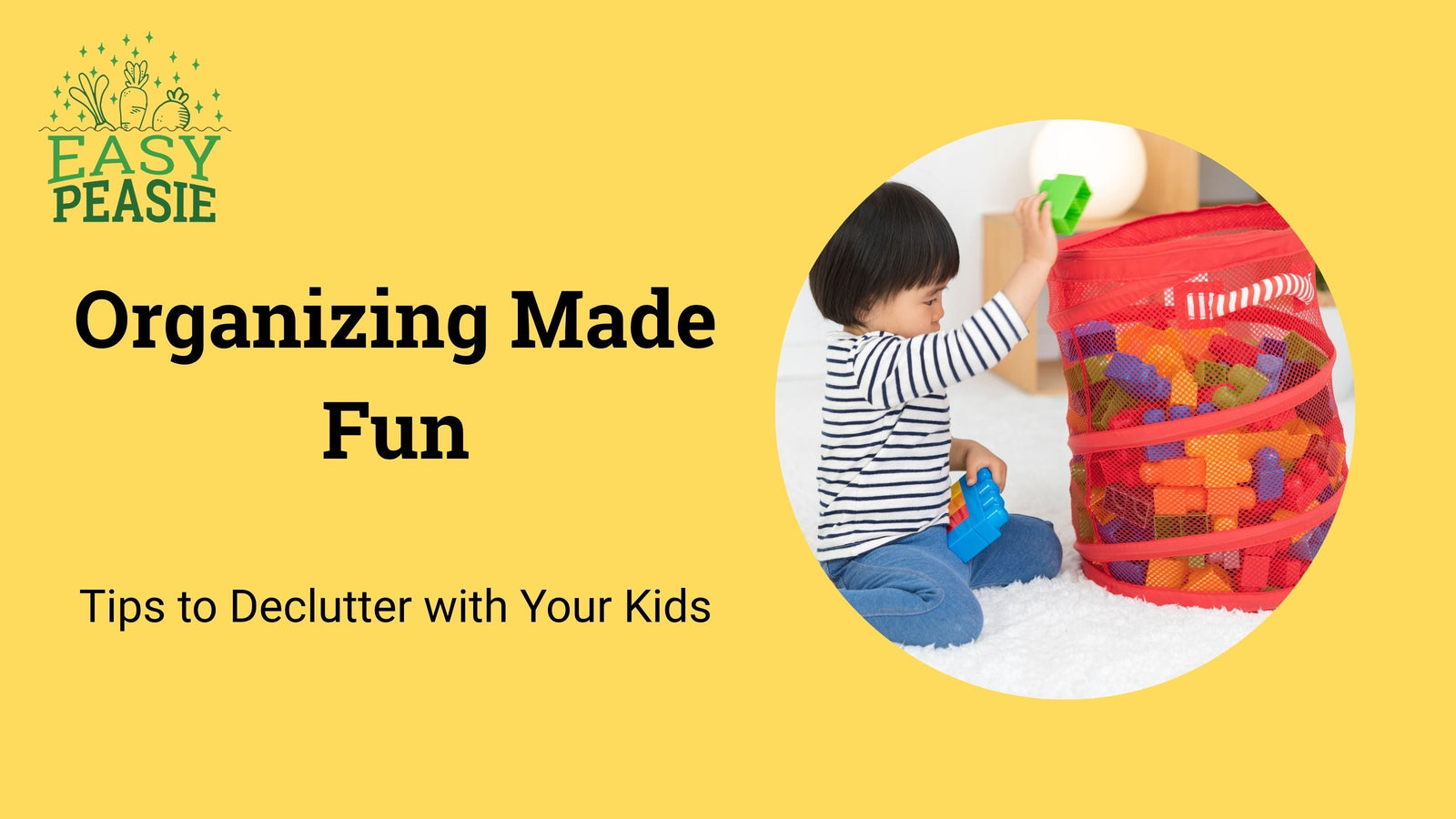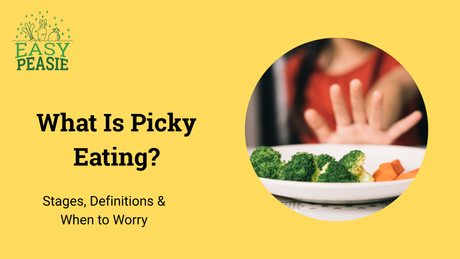Involving kids in the decluttering process is more than just about tidying up—it's a valuable opportunity to teach lifelong organizational skills. When children participate in organizing their spaces, they learn responsibility, decision-making, and the benefits of a clean environment.
Teaching kids how to declutter and organize their belongings not only helps keep the house in order but also builds their confidence and independence. From sorting toys to organizing clothes, children gain a sense of accomplishment and pride in their tidy spaces.
In this blog, we'll explore practical tips for organizing with kids, creative storage solutions, and fun decluttering games that make the process enjoyable for everyone. We'll cover everything from organizing toys and clothes to maintaining a tidy kids' room and creating effective study areas. Let's dive into how you can make decluttering a positive and engaging experience for your children!
Setting the Stage for Decluttering
Organizing Tips with Kids: Making It a Family Project
Turn decluttering into a fun family project. Involve everyone from the start by having a family meeting to discuss the plan. Explain the benefits of a tidy space and how everyone can contribute. Assign specific areas to each family member to make the task manageable and inclusive.
How to Declutter with Children: Setting Goals and Expectations
Start by setting clear goals and expectations. Discuss what areas need decluttering and what you hope to achieve. Make a list of tasks and break them down into smaller, achievable steps. Clear communication helps children understand their roles and what’s expected of them.
Creating a Fun and Motivating Environment
Create a motivating environment by turning on upbeat music and providing fun tools like colorful bins and labels. Make it a game by setting challenges, such as who can fill their donation box the fastest or who can organize their toys in the most creative way.
Keeping the mood light and playful encourages enthusiasm and participation.
Child-Friendly Decluttering Techniques
Breaking Down the Task: Small Steps for Big Results
Tackle decluttering in small, manageable steps. Focus on one area at a time, such as a toy bin or a closet shelf. This approach prevents children from feeling overwhelmed and makes the process more manageable. Celebrate small victories to keep motivation high.
Using Timers and Music to Make Decluttering Fun
Use timers to create a sense of urgency and excitement. Set a timer for 15-minute decluttering sprints, challenging kids to see how much they can accomplish before the timer goes off. Playing their favorite music adds an element of fun and keeps energy levels up.
Reward Systems: Positive Reinforcement and Celebration
Implement a reward system to reinforce positive behavior. Offer small rewards like stickers, extra playtime, or a special treat for completing tasks. Celebrating their efforts with praise and rewards builds confidence and makes them feel proud of their contributions.
Kids Room Organization
Organizing Toys Effectively: Sorting, Categorizing, and Storing
Start by sorting toys into categories such as action figures, dolls, and building blocks. This helps kids understand where each toy belongs and makes cleanup simpler. Use bins and baskets to keep similar items together, making it easier for kids to find and put away their toys.
Clear, stackable bins are great for maximizing space and keeping everything visible. Label each bin with pictures or words to help young children identify where things belong.
Creative Storage Solutions for Kids: Bins, Shelves, and Labels
Maximize space with creative storage solutions.
Use colorful bins and baskets on low shelves so kids can easily access their toys. Over-the-door organizers and under-bed storage are great for saving space. Adding labels to each storage container helps keep everything organized and easy to find.
Declutter Kids' Clothes: Seasonal Rotation and Donation Tips
Declutter kids' clothes by sorting them into keep, donate, and store piles.
Rotate seasonal clothes to keep closets manageable. Store off-season clothing in labeled bins or vacuum-sealed bags. Encourage kids to donate clothes they’ve outgrown to teach them about helping others and making space for new items.
Minimizing Toy Clutter
Strategies to Reduce Toy Overload
Limit the number of toys available at one time to prevent overwhelm. Regularly review toys with your child to decide which ones to keep and which to part with. This helps maintain a manageable number of toys and teaches kids decision-making skills.
Implementing a Toy Rotation System
A toy rotation system keeps playtime fresh and exciting. Store some toys away and rotate them every few weeks. This not only reduces clutter but also makes old toys feel new again.
It’s a great way to maintain interest without constantly buying new toys.
Encouraging Kids to Donate or Pass on Toys They No Longer Use
Teach kids the joy of giving by encouraging them to donate toys they no longer play with. Explain how their unused toys can bring happiness to other children. Involve them in the process of selecting toys to donate, making it a meaningful and rewarding activity.
Involving Kids in the Process
Child Participation in Organizing: Age-Appropriate Tasks
Involving kids in organizing is key to teaching them responsibility. Assign age-appropriate tasks like sorting toys, folding clothes, or labeling bins. Younger children can help by placing toys in baskets, while older kids can handle more complex tasks like arranging books on shelves.
Family Decluttering Strategies: Working Together as a Team
Decluttering as a family fosters teamwork and makes the process more enjoyable.
Set aside time each week for a family declutter session. Assign specific areas to each family member and work together to tackle the mess. Celebrate your progress with a fun activity once the task is complete.
Teaching Kids to Declutter: Making It a Lifelong Habit
Teaching kids to declutter helps them develop lifelong organizational skills. Encourage them to regularly evaluate their belongings and decide what to keep, donate, or discard.
Involve them in the decision-making process to empower them and help them understand the value of each item. Set up a designated declutter day each month where you go through toys, clothes, and other items together.
Maintaining a Tidy Kids' Room
Daily and Weekly Routines to Keep Clutter at Bay
Establishing daily and weekly routines can help maintain a tidy room. Encourage kids to spend a few minutes each day putting away toys and clothes. Set aside time each week for a more thorough clean-up, involving tasks like dusting and organizing shelves.
Organizing Kids' Study Areas: Creating Productive Spaces
A well-organized study area can enhance productivity and focus.
Use desk organizers to keep school supplies in order. Ensure that the study space is free from distractions and has adequate lighting. Regularly declutter the desk to maintain a neat and functional workspace.
Tips for Maintaining Order and Cleanliness
Consistency is key to maintaining order. Teach kids to put items back in their designated spots after use. Use labels to help them remember where things belong.
Regularly reassess and reorganize storage solutions to ensure they continue to meet your family’s needs.
Declutter Games for Children
Fun Activities that Encourage Tidying Up
Turning decluttering into a game can make the process enjoyable for kids. Create a treasure hunt where they search for items to put away. Use a color game where they sort toys or clothes by color, making tidying up feel like an adventure.
Creating Challenges and Competitions
Kids love a good challenge! Set a timer and see who can pick up the most toys before it goes off. Create friendly competitions with rewards for the fastest or most efficient cleaner. This not only makes decluttering fun but also teaches them about time management and teamwork.
Making Organizing a Game to Keep Kids Engaged
Incorporate organizing into playtime by using playful language and themes. Pretend you’re pirates sorting treasure or superheroes saving the day by cleaning up. This creative approach keeps kids engaged and helps them develop a positive attitude towards tidying up.
For instance, set a timer and challenge them to find and put away as many "treasures" (toys) as they can before the timer goes off. Or, assign superhero roles and create a mission to rescue their toys from the "villain" of clutter.
You can also use storytelling to make the task more enjoyable. For example, imagine that the toys are characters in a story who need to return to their special homes. This not only makes the activity fun but also gives kids a sense of purpose and accomplishment. Rewarding them with small prizes or stickers for their efforts can further reinforce the positive behavior.
Creating themed clean-up days can also add variety and excitement. One day, you might be explorers organizing their "expedition gear," while another day, you could be chefs arranging a "kitchen" of play food and utensils. By turning organizing into a series of imaginative games, you make the process less of a chore and more of an adventure, helping to instill a lifelong habit of tidiness and organization.
Engaging Children in Housekeeping
Building Responsibility through Household Chores
Assigning household chores to kids helps build their sense of responsibility. Simple tasks like making their bed, putting laundry in the hamper, or setting the table teach them to contribute to the household. This involvement boosts their confidence and independence.
Start with age-appropriate chores to ensure they are manageable and enjoyable. For younger children, tasks like picking up toys or dusting low surfaces can be a great start. As they grow, they can take on more complex responsibilities such as vacuuming, washing dishes, or helping with meal prep.
Age-Appropriate Tasks for Kids to Help with Organization
Tailor tasks to your child’s age and abilities. Younger kids can help with simple tasks like sorting socks or wiping surfaces, while older kids can handle more complex chores like vacuuming or organizing their study area. This ensures they feel capable and motivated.
Benefits of a Clean and Organized Home for the Whole Family
A clean and organized home benefits everyone. It creates a calming environment, reduces stress, and makes daily routines smoother. Teaching kids to keep their spaces tidy fosters a sense of pride and responsibility, contributing to a harmonious and efficient household.
Summary
Decluttering with kids not only creates a tidy home but also teaches valuable organizational skills. It helps children develop a sense of responsibility and pride in their surroundings.
When children participate in organizing their spaces, they learn how to manage their possessions and understand the importance of maintaining order. By involving them in the process, you turn a chore into a fun, educational family activity.
Use games and challenges to make tidying up exciting, such as timed sorting races or scavenger hunts for misplaced items. Celebrate their achievements and progress to motivate them further. This collaborative approach fosters teamwork and strengthens family bonds, making the home a harmonious and clutter-free environment.
Start Implementing These Tips and Strategies
Now is the perfect time to start incorporating these decluttering tips and strategies with your children. With a bit of planning and creativity, you can transform organizing into a positive experience that everyone enjoys. Start small, be consistent, and watch as your family’s organizational skills grow.
Creating a tidy and organized environment for your children sets them up for success in many areas of life. It fosters a sense of order, reduces stress, and makes daily routines smoother. Encourage your kids to take part in keeping their spaces neat, and they’ll carry these habits into adulthood.
We’d love to hear from you! Share your own decluttering tips and experiences. Leave your comments below and don't forget to follow Easy Peasie for more info and convo on YouTube, Facebook, and Instagram! ~ThePeas





